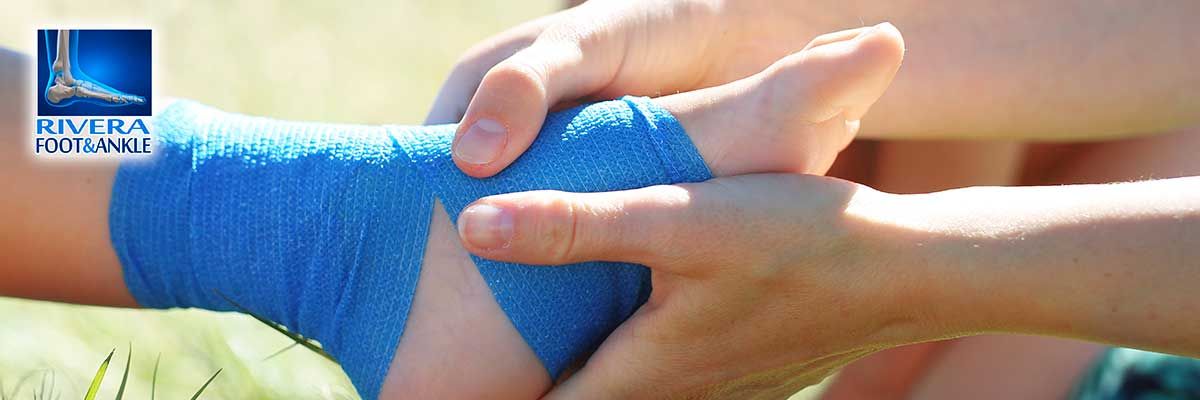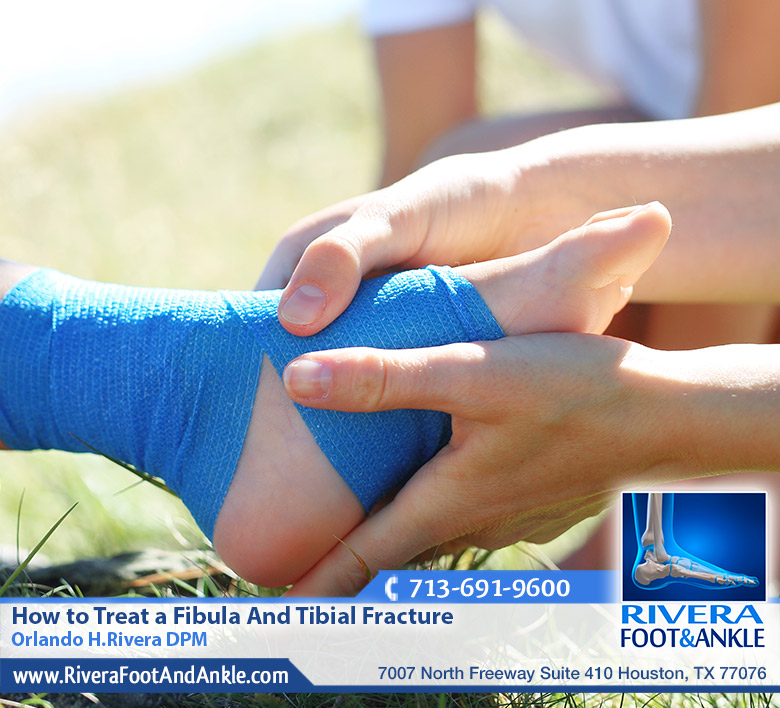
Orlando H.Rivera DPM
How to Treat a Fibula And Tibial Fracture
Tibia and fibula fractures can be treated with standard bone fracture treatment procedures. The treatment depends on the severity of the injury and age of the child. It may include some of the following approaches, used either alone or in combination:
- Closed reduction and immobilization: Setting the bone in place without surgery, and immobilization in a long-leg or a short-leg cast
- Open reduction: Exposing the bone surgically to set it back in place — typically performed on open fractures where the bone has punctured the skin. This procedure is usually accompanied by internal or external fixation.
- Internal fixation: Connecting the broken bones with screws, plates, rods and nails that will remain under the skin.
- External fixation: Using pins, clamps and rods to stabilize the fracture from the outside.
- Percutaneous pinning: Inserting wires across the fracture to hold the pieces in place until they heal. The wires are removed after the fracture has healed.
- Medications: When the fracture has broken the skin, treating with antibiotics to prevent infection and analgesics to control pain. A tetanus shot may also be needed.
Treatment of Open Fractures of the Tibia
An open fracture occurs when the bone or parts of the bone break through the skin. This type of fracture usually results from high-energy trauma or penetrating wounds. Open fractures of the tibia are common among children and adults.
The treatment of an open tibial fracture starts with antibiotics and a tetanus shot to address the risk of infection. Then the injury is cleaned to remove any debris and bone fragments. Surgery may also be needed depending on the wound size, amount of tissue damage and any vascular (circulation) problems. Open reduction and internal fixation is the surgery that can be used to reposition and physically connect the bones in an open fracture.
Wounds may be treated with vacuum-assisted closure. This procedure involves placing a piece of foam in the wound and using a device to apply negative pressure to draw the edges of a wound together. Repeated cleanings prior to closing the wound may be used instead. Or an external fixator may be used to surgically repair the wound.
Therapy
After the splint or cast is removed, you will probably need to engage in rehabilitation exercises or physical therapy to reduce any stiffness and restore movement to the injured leg. Since you haven’t been able to move the leg for quite some time, you will probably have weak and stiff muscles in the areas that are injured. Rehabilitation can help, but it will take a few months of longer for the injury to heal.
RIVERA FOOT & ANKLE: At Orlando H.Rivera DPM, our priority is to deliver quality care to informed patients in a comfortable and convenient setting. When you have problems with your feet, you need to turn to a podiatrist who listens and responds… an experienced doctor who knows the field and can effectively diagnose and treat your needs… a friendly physician who counsels you on the best ways to maintain and improve your health. Our physician(s) meet all these criteria. Plus, you benefit from a dedicated team of trained professionals who give you the individualized attention you deserve.

Orlando H.Rivera DPM
Foot and Ankle, Dr. Orlando Rivera, Advanced Foot & Ankle Specialist, Foot and Ankle Podiatry, Houston Foot & Ankle Surgical, Treatment of Foot and Ankle, Foot & ankle specialists, Podiatrist in houston, podiatrist in houston, Orlando H.Rivera DPM, Houston Foot Doctor, Foot and Ankle Surgeon Houston, Ankle and Foot Specialist Houston, Podiatrist Houston, Foot Pain Houston.



